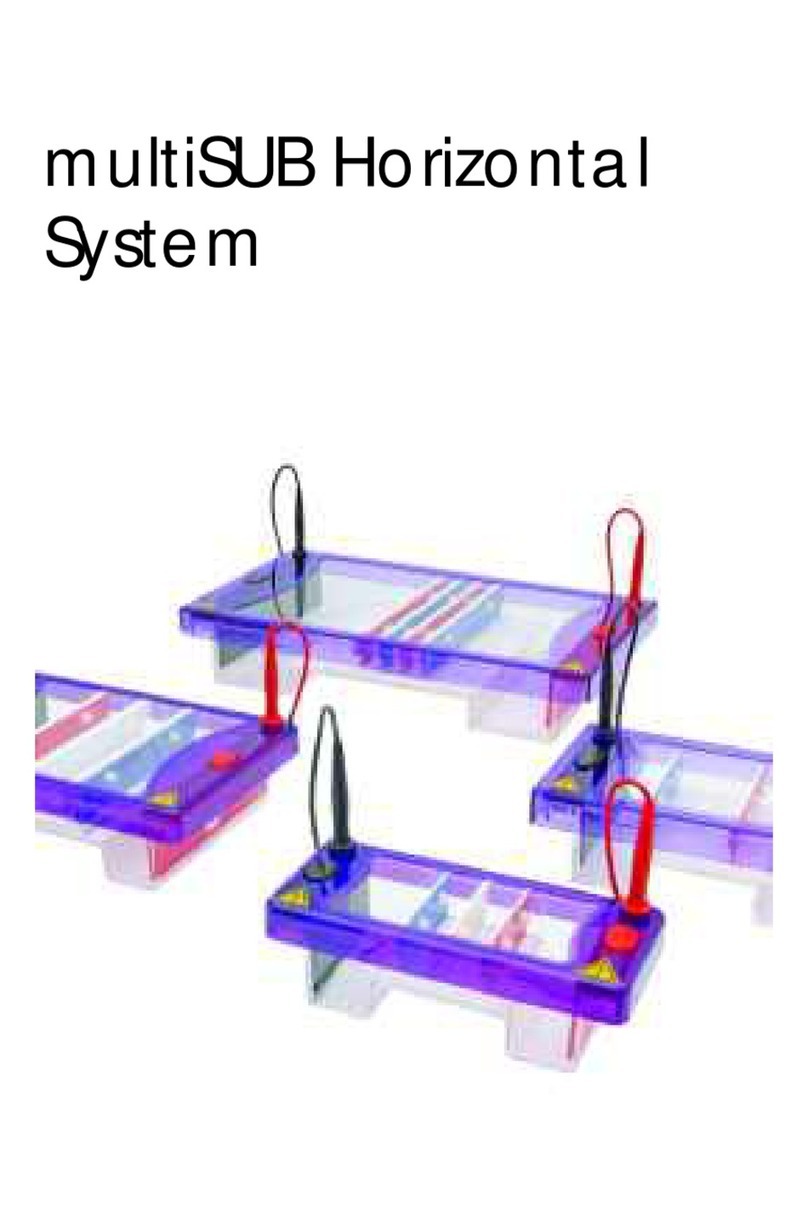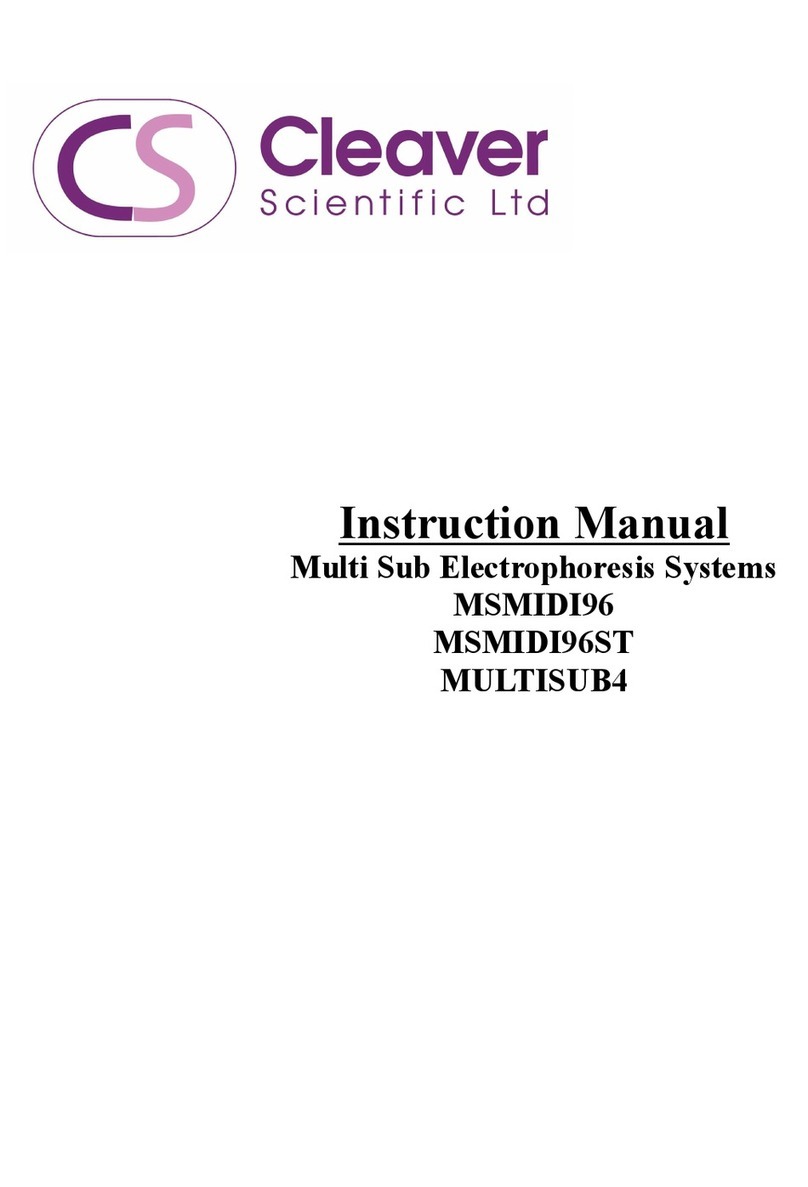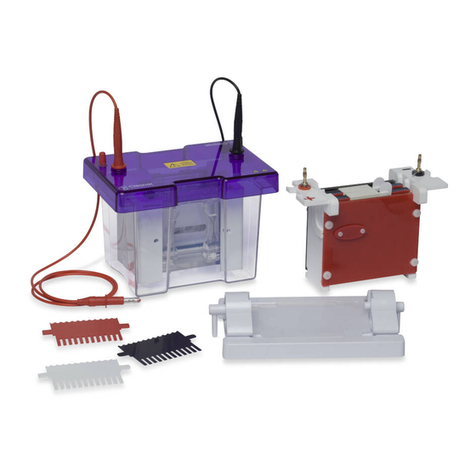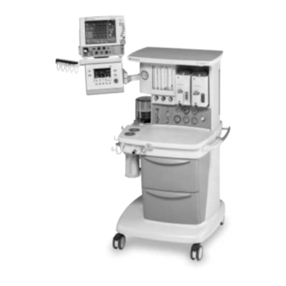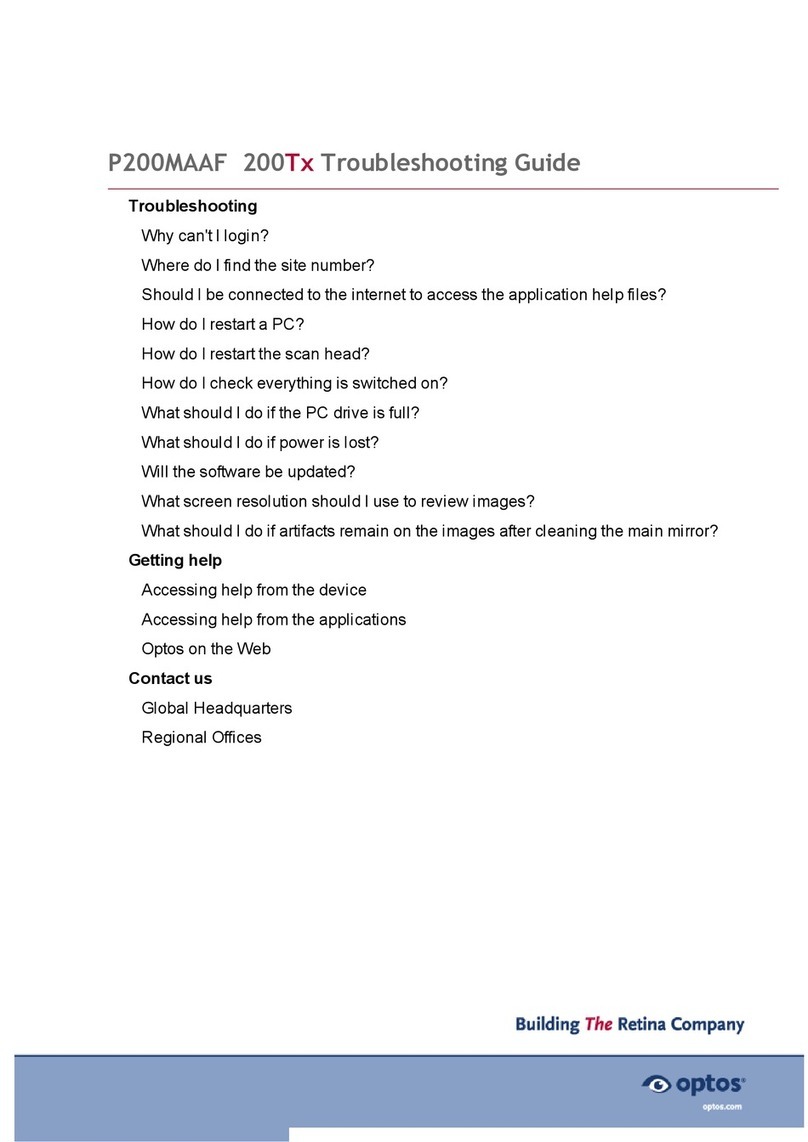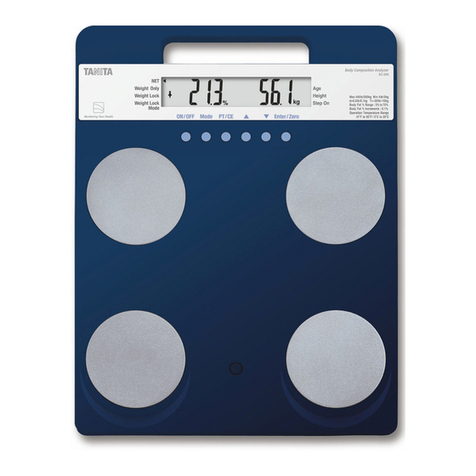Cleaver Scientific multiSUB Screen User manual

multiSUB Screen
Horizontal System


15/11/2018 Page 1
multiSUB®Screen
Horizontal
Electrophoresis Unit
Instruction Manual
Catalogue Numbers
MSSCREEN16
MSSCREEN24
MSSCREEN32
MSSCREEN-TRIO
MSSCREEN16-NC
MSSCREEN24-NC
MSSCREEN32-NC
MSSCREEN-TRIO-NC
Record the following for your records:
Model _____________________
Catalogue No. _____________________
Date of Delivery _____________________
Warranty Period _____________________
Serial No. _____________________
Invoice No. _____________________
Purchase Order No. _____________________

15/11/2018 Page 2
Contents
Instruction Manual 1
Catalogue Numbers 1
Contents 2
Safety Information 3
Packing List 4
Specifications 5
Operating Instructions 6
Usage Guidance and restrictions 6
Setting up the Horizontal Gel Tanks 6
Fitting Electrodes 6
Fitting Loading Guides 6
Gel Preparation 7
Gel Pouring 8
Flexicaster 8
Tape 9
Running the Gel 9
Gel Staining and Viewing 10
Solutions 10
References 11
Troubleshooting 12
Care and Maintenance 13
Cleaning Horizontal Units 13
RNAse Decontamination 13
Ordering information 14
Comb options 14
Related Products 15
Warranty 16

15/11/2018 Page 3
Safety Information
When used correctly, these units pose no health risk. However, these units
can deliver dangerous levels of electricity and are to be operated only by
qualified personnel following the guidelines laid out in this instruction manual.
Anyone intending to use this equipment should read the complete manual
thoroughly. The unit must never be used without the safety lid correctly in
position. The unit should not be used if there is any sign of damage to the
external tank or lid.
These units comply with the following European directives:
2006/95/CE Low Voltage Directive and 2014/30/UE (official Title 2004/108/EC)
EMC Electromagnetic Compatibility
By virtue of the following harmonised standards:
BS EN IEC 61010-1: 2010 Safety Testing of Lab Equipment
BS EN IEC 61326-1:2013 EMC Electro Magnetic Compatibility

15/11/2018 Page 4
Packing List
Each multiSUB unit includes a tank, wired electrodes, lid and the following
items:
Tray Combs Loading Guides Cables Flexicaster
MSSCREEN16 MS26-UV16 ,
26 x 16cm
(W x L)
6 x MS26-
28MC-1, 1mm,
28 sample
MS26-LG – Strips,
MS26-WP –
Platform
CSL-CAB MS26-FC
MSSCREEN24 MS26-UV24 ,
26 x 24cm
(W x L)
6 x MS26-
28MC-1, 1mm,
28 sample
MS26-LG – Strips,
MS26-WP –
Platform
CSL-CAB MS26-FC
MSSCREEN32 MS26-UV32 ,
26 x 32cm
(W x L)
6 x MS26-
28MC-1, 1mm,
28 sample
MS26-LG – Strips,
MS26-WP –
Platform
CSL-CAB MS26-FC
MSSCREENTRIO MS26-UV16
, MS26-
UV24, MS26-
UV32
6 x MS26-
28MC-1, 1mm,
28 sample
MS26-LG – Strips,
MS26-WP –
Platform
CSL-CAB MS26-FC
MSSCREEN16-NC MS26-UV16 ,
26 x 16cm
(W x L)
6 x MS26-
28MC-1, 1mm,
28 sample
MS26-LG – Strips,
MS26-WP –
Platform
CSL-CAB None
MSSCREEN24-NC MS26-UV24 ,
26 x 24cm
(W x L)
6 x MS26-
28MC-1, 1mm,
28 sample
MS26-LG – Strips,
MS26-WP –
Platform
CSL-CAB None
MSSCREEN32-NC MS26-UV32 ,
26 x 32cm
(W x L)
6 x MS26-
28MC-1, 1mm,
28 sample
MS26-LG – Strips,
MS26-WP –
Platform
CSL-CAB None
MSSCREENTRIO-NC MS26-UV16
, MS26-
UV24, MS26-
UV32
6 x MS26-
28MC-1, 1mm,
28 sample
MS26-LG – Strips,
MS26-WP –
Platform
CSL-CAB None
Packing List Checked by: ________________________
Date: ________________________
The packing lists should be referred to as soon as the units are received to
ensure that all components have been included. The unit should be checked
for damage when received.
Cleaver Scientific is liable for all missing or damaged parts / accessories within
7 days after customers have received this instrument package. Please contact

15/11/2018 Page 5
Cleaver Scientific immediately regarding this issue. If no response within such
period is received from the customer, Cleaver Scientific will no longer be liable
for replacement/damaged parts.
Please contact your supplier if there are any problems or missing items.
Specifications
Power supply cables 1500V rated with retractable 4mm connectors
Safety lid and viewing pane High impact acrylic construction
Height adjustable combs Acrylic
UV transparent gel tray UV transparent above 300nm, Fabricated acrylic
Comb Slots Allow multiple combs per tray
Colour-coded electrodes Acrylic, 99.99% platinum wire, gold plated 4mm plugs
Safety lid thumb locators For safe removal of lid
Buffer tank High Impact acrylic construction for chemical
compatibility and shock resistance

15/11/2018 Page 6
Operating Instructions
Further information (including videos) regarding setting up and running the
multiSUB®units can be found at www.cleaverscientific.com
Usage Guidance and restrictions
Maximum altitude 2,000m.
Temperature range between 4°C and 65°C.
Maximum relative humidity 80% for temperatures up to 31OC
decreasing linearly to 50% relative humidity at 40OC.
Not for outdoor Use.
This apparatus is rated POLLUTION DEGREE 2 in accordance with IEC 664.
POLLUTION DEGREE 2, states that: “Normally only non-conductive pollution
occurs.
Occasionally, however, a temporary conductivity caused by condensation
must be expected”.
Setting up the Horizontal Gel Tanks
Fitting Electrodes
Note the position of the lid on the unit. This shows the correct polarity
and the correct orientation of the cables, black is negative and red
positive.
Remove the lid from the unit. Note if the lid is not removed, fitting the
cables may result in un-tightening of the gold plug and damage to the
electrode.
Screw the cables into the tapped holes as fully as possible so that there
is no gap between the lid and the leading edge of the cable fitting.
Refit the lid.
Fitting Loading Guides
These can be fitted to enhance visibility of the wells if desired. They can be
fitted to the white vinyl platform sheet or to the unit itself.
1. Seat the tray in the unit and note the position of the comb grooves. The
samples run black to red but the trays can be used frontward or
backwards so ensure that the comb grooves closest to the black
electrode are marked.

15/11/2018 Page 7
2. Remove the tray.
3. Peel the back off the loading guide and carefully apply the loading
guide directly to the gel platform.
The unit is now ready to be used.
Gel Preparation
The Table below shows the volume of agarose solution required to make the
desired agarose gel for each unit tray size. For a standard 0.7% agarose gel,
add 0.7 grams of agarose to 100 ml of 1x TAE or TBE solution. The same 1X
solution should be used in the tank buffer solution.
Tray Gel volume for a 5mm thick gel
26 x 16cm 208ml
26 x 24cm 312ml
26 x 32cm 416ml
1. Add the agarose powder to a conical flask.
2. Add the appropriate amount of 1x TAE or TBE solution from the table
above. To prevent evaporation during the dissolving steps below, the
conical flask should be covered with parafilm.
3. Dissolve the agarose powder by heating the agarose either on a
magnetic hot plate with stirring bar or in a microwave oven. If using the
microwave method, the microwave should be set at around a 400 watt
or medium setting and the flask swirled every minute. The solution
should be heated until all crystals are dissolved. This is best viewed
against a light background. Crystals appear as translucent crystals.
These will interfere with sample migration if not completely dissolved.
The gel must be cooled to between 50°C and 60°C degrees before pouring.

15/11/2018 Page 8
Gel Pouring
The multiSUB®range of units allows two different methods of gel casting:
1. Flexicaster
2. Traditional Tape
Flexicaster
1. Level the Flexicaster base by adjusting the feet so that the bubble is
exactly central.
2. Insert the desired length tray into the Flexicaster such that one end of
the tray is pushed up and seals against the silicone mat of the
permanent end of the Flexicaster.
3. Position the movable end of the Flexicaster so that the silicone mat is
pushed against the other end of the tray.
4. Turn the cam so that the silicone mat tightly seals against the side of the
tray. Pour in the agarose carefully so as not to generate bubbles. Any
bubbles that do occur can be smoothed to the edge of the gel and
dispersed using a pipette tip.
5. Allow the agarose to set, ensuring that the gel remains undisturbed.
6. Carefully remove the gel casting gates and comb and transfer the gel
including tray to the main tank.
MS7-FC and MS20-FC Flexicasters

15/11/2018 Page 9
Tape
1. Autoclave or plastic backed general tape should be used. A length
5cm longer than the width of each end of the tray should be cut. One
length should be placed over one end of the tray and stuck m1cm in
from the tray edge. This should then be folded, and the edges sealed
securely. Repeat for the other end and place onto a level surface for
gel pouring.
2. Place the comb(s) in the grooves. Each tray has more than one comb
grove so that multiple combs can be used. Using multiple combs
increases sample number available per gel but decreases run length
and care must be taken to ensure that samples from the first wells do
not migrate into the lanes of the second comb wells.
3. Pour in the agarose carefully so as not to generate bubbles. Any
bubbles that do occur can be smoothed to the edge of the gel and
dispersed using a pipette tip.
4. Allow the agarose to set, ensuring that the gel remains undisturbed.
5. Carefully remove the gel casting gates and comb and transfer the gel
including tray to the main tank.
Running the Gel
1. Mix the sample to be loaded with sample buffer – see solutions for
common sample buffers. Usually 3ul of sample buffer is adequate but
less may be used with sample volumes of less than 10ul.
2. Fill the unit with buffer until the gel is just flooded with buffer. This will give
the fastest resolution times. For enhanced quality of resolution of
sample, fill the unit to 5mm above the gel.
3. Load the samples into the wells using pipettes. Multi-channel pipettes
can be used for loading samples with MC compatible combs, see
listing in accessories for identification of these.
4. Carefully place the lid on the tank and connect to a power supply.
5. Typically, gels are run at between 90 and 150 volts. However, maximum
voltages are indicated on the serial badge of each unit. It should be
noted that higher voltages generally give faster but poorer quality
sample resolution.

15/11/2018 Page 10
Gel Staining and Viewing
The Multi Sub trays allow staining to be performed without removing the gel
from the tray if this is preferred.
1. Transfer the gel to a vessel containing the appropriate volume of 0.5 µg/ml
ethidium bromide stain for 15–30 minutes, see solutions for stock stain
concentration and adjust to the volume used accordingly. The entire gel
should be covered.
NOTE: Ethidium bromide is a suspected carcinogen and the necessary safety
precautions should be taken.
2. De-stain the gel for 10–30 minutes in distilled water again ensuring the gel
is completely immersed.
3. Rinse the gel twice for a couple of seconds with distilled water.
4. Transfer the gel to a UV Transilluminator.
The samples will often appear as brighter, clearer bands when
photographed or viewed using a gel documentation system. However, if the
gel bands are too faint then the staining procedure should be adjusted so
that there is less de-staining. If there is too much background, then the
staining procedure should be adjusted so that there is more de-staining.
Solutions
0.5M EDTA stock (500mL) dissolve in 400 ml distilled water:
93.05g EDTA disodium salt
Fill to 500 ml litre final volume with distilled water
50X TAE stock (1L) dissolve in 750 ml distilled water:
242 g tris base (FW = 121)
57.1 ml glacial acetic acid
100 ml 0.5 M EDTA (pH 8.0).
Fill to 1 litre final volume with distilled water

15/11/2018 Page 11
10X TBE stock (1L) dissolve in 750 ml distilled water:
108 g tris base (FW = 121)
55 g boric acid (FW = 61.8)
40 ml 0.5 M EDTA (pH 8.0)
Fill to 1 litre final volume with distilled water
Loading Dye
10x sample buffer stock consists of 50% glycerol, 0.25% bromophenol blue,
and 0.25% xylene cyanole FF in 1x TAE buffer. Only 1–10 ml of the 10x loading
dye should be prepared.
Ethidium Bromide Solution
Add 10 mg of Ethidium Bromide to 1 ml distilled water.
References
1. Sambrook, Fritsch, and Maniatis, Molecular Cloning A Laboratory
Manual, Second Edition, Cold Spring Harbor Laboratory Press, 1989.
2. Current Protocols in Molecular Biology, Greene Publishing Associates
and Wiley-Interscience, 1989.

15/11/2018 Page 12
Troubleshooting
Problem Cause Solution
Bands sharp but not enough
bands seen
Gel agarose percentage too
high
Incomplete digestion
Decrease agarose percentage.
Review enzyme activity, digest
further.
Band smearing and streaking
Agarose has improper
endosmosis
Salt concentration in sample too
high
Excessive power and heating
Sample spilled out of well
Incomplete digestion, nuclease
contamination, bad enzyme
Sample wells cast through the
gel. Sample leaks along bottom
of running surface
Consult Cleaver Scientific about
agarose.
Reduce salt concentration to
≤0.1M.
Reduce voltage. See
electrophoresis instructions.
Apply sample carefully. Increase
gel thickness for large sample
volumes. Adjust comb height.
Heat sample. Review enzyme
activity. Digest sample further.
Comb should be placed to 1 to 2
mm above the base of the
running surface.
Curved line or distortion of bands Bubbles in sample wells Remove bubbles prior to
electrophoresis.
Curved bands, smiles Sample overload Reduce load.
Differential relative mobilities
Sample spilled out of wells
Unit not levelled
Samples should have proper
density. Apply carefully.
Level unit. Use a steady work
bench.
Gels crack
Too high voltage gradient,
especially with low melting
temperature agarose or low gel
strength gels
Reduce voltage. Run gel at lower
temperature.
High MW bands sharp; low MW
bands smeared Gel agarose percentage too low Increase agarose percentage.
Switch to polyacrylamide.
Ragged bands
Sample density incorrect
Sample well deformed
Excessive power or heating
See sample application
instructions.
Carefully remove comb,
especially from soft gels. Make
sure gel has solidified.
Cooling soft gels aids in comb
removal.
Reduce voltage. See
electrophoresis instructions.
Slanted lanes (bands) Gel not fully solidified
Comb warped or at an angle
Gel to solidify for at least 30-
45min.
Check alignment of comb.

15/11/2018 Page 13
Care and Maintenance
Cleaning Horizontal Units
Units are best cleaned using warm water and a mild detergent. Water at
temperatures above 60°C can cause damage to the unit and components.
The tank should be thoroughly rinsed with warm water or distilled water to
prevent build-up of salts, but care should be taken not to damage the
enclosed electrode and vigorous cleaning is not necessary or advised.
Air drying is preferably before use.
The units should only be cleaned with the following:
Warm water with a mild concentration of soap or other mild detergent.
Compatible detergents include dishwashing liquid, Hexane and Aliphatic
hydrocarbons
The units should not be left to in detergents for more than 30 minutes.
The units should never come into contact with the following cleaning agents,
these will cause irreversible and accumulative damage:
Acetone, Phenol, Chloroform, Carbon tetrachloride, Methanol, Ethanol,
Isopropyl alcohol, Alkalis.
RNAse Decontamination
This can be performed using the following protocol:
Clean the units with a mild detergent as described above.
Wash with 3% hydrogen peroxide (H2O2) for 10 minutes.
Rinsed with 0.1% DEPC-(diethyl pyro carbonate) treated distilled water,
Caution: DEPC is a suspected carcinogen. Always take the necessary
precautions when using.
RNaseZAP™(Ambion) can also be used. Please consult the instructions for
use with acrylic gel tanks.

15/11/2018 Page 14
Ordering information
Comb options
Catalogue No. Description
MS26-28MC-0.75 Comb 28 sample MC, 0.75mm thick
MS26-56MC-0.75 Comb 56 sample MC, 0.75mm thick
MS26-28MC-1 Comb 28 sample MC, 1mm thick
MS26-56MC-1 Comb 56 sample MC, 1mm thick
MS26-28MC-1.5 Comb 28 sample MC, 1.5mm thick
MS26-56MC-1.5 Comb 56 sample MC, 1.5mm thick
MS26-28MC-2 Comb 28 sample MC, 2mm thick
MS26-56MC-2 Comb 56 sample MC, 2mm thick

15/11/2018 Page 15
Related Products
Catalogue No. Product description
nanoPAC-300 Mini Power supply, 300V, 400mA, 60W -100 -240VAC
nanoPAC-500 Mini Power supply, 500V, 400mA, 120W -100 -240VAC
POWERPRO300 MIDI Power Supply, 300V, 700mA, 150 – 100 -240VAC
omniDOCPROSAFE
OMNIDOC plus Blue LED Epi-illumination Module (OMNIDOC-BL), and
520, 560 & 580nm filters (OMNIDOC-SYBR, -AF560 & -AF580); and White
Light Table (OMNIDOC-WLT). Requires a PC or laptop
CSL-AG5 Agarose Powder 5g, Low EEO
CSL-AG100 Agarose Powder 100g, Low EEO
CSL-AG500 Agarose Powder 500g, Low EEO
CSL-AG1000 Agarose Powder 1000g, Low EEO (2x500g bottles)
CSL-AG2000 Agarose Powder 2000g, Low EEO (4x500g bottles)
CSL-AG5000 Agarose Powder 5000g, Low EEO (10x500g bottles)
CSL-AG10KG Agarose Powder 10Kg, Low EEO (20x500g bottles)
CSL-LMA5 Agarose Powder 5g, Low Melting Point
CSL-LMA50 Agarose Powder 50g, Low Melting Point
CSL-LMA100 Agarose Powder 100g, Low Melting Point
CSL-HRA100 Agarose Powder 100g, High Resolution
CSL-HRA500 Agarose Powder 500g, High Resolution
CSL-AGTAB Agarose Tablet 100g, Low EEO (200 x 0.5g tablets, supplies as 20 blister
packs of 10 x 0.5g tablets)
CSL-RUNSAFE CSL-RUNSAFE - Package: 1 ml/vial
CSL-TBEP Powdered Tris-Borate-EDTA Running Buffer- 10 sachets (1litre/pk)
TBE10X1L Cleaver Buffer Tris-Borate-EDTA Running Buffer- 10 x 1L
TBE10X5 Cleaver Buffer Tris-Borate-EDTA Running Buffer- 10 x 5L
TAE50X1L Cleaver Buffer Tris-Borate-EDTA Running Buffer- 50 x 1L
TAE50X5L Cleaver Buffer Tris-Borate-EDTA Running Buffer- 50 x 5L
CSL-MDNA-100BH 100bp DNA ladder, 100 – 300bp, 1 x 500µl vial
CSL-MDNA-100BP 100bp DNA ladder, 100 – 1500bp, 1 x 500µl vial
CSL-MDNA-1KB 1Kb DNA ladder, 250 – 10Kb, 1 x 500µl vial
CSL-MDNA-50BP 50bp DNA ladder, 50 – 1500bp, 1 x 500µl vial
CSL-MDNA-BR Broad Range DNA ladder, 100bp – 10Kb, 1 x 500µl vial
CSL-MDNA-HR High Range DNA ladder, 250bp – 25Kb, 1 x 500µl vial
CSL-LOADDYE 10x Bromophenol Blue Loading Dye, 1mL
CSL-LOADDYE10 10x Bromophenol Blue Loading Dye, 10mL
SAFEVIEW BLUE Light Transilluminator 21 x 21cm
CSLUVTS312 UV Transilluminator, small 21 x 21 cm, 312nm
CSL-GELX4 4mm x 1mm, Gel Cutting Tips, 250/ bag
CSL-GELX4RACK 4mm x 1mm, Gel Cutting Tips, 5 racks of 48
CSL-GELX6.5 6.5mm x 1mm, Gel Cutting Tips, 250/ bag
CSL-GELX6.5RACK 6.5mm x 1mm, Gel Cutting Tips, 5 racks of 48
CSLQSPIN Mini Centrifuge complete with 1.5/2.0 ml rotor, strip tube rotor, 0.5 and
0.4 ml adapters, 230V, Purple lid
CV20 Cleaver Pipette - Volume; 2 - 20µl

15/11/2018 Page 16
Warranty
The Cleaver Scientific Ltd. (CSL) multiSUB®Horizontal Electrophoresis units
have a warranty against manufacturing and material faults of twelve months
from date of customer receipt.
If any defects occur during this warranty period, CSL will repair or replace the
defective parts free of charge.
This warranty does not cover defects occurring by accident or misuse or
defects caused by improper operation.
Units where repair or modification has been performed by anyone other
than CSL or an appointed distributor or representative are no longer under
warranty from the time the unit was modified.
Units which have accessories or repaired parts not supplied by CSL or its
associated distributors have invalidated warranty.
CSL cannot repair or replace free of charge units where improper solutions or
chemicals have been used. For a list of these please see the Care and
Maintenance subsection.
If a problem does occur, then please contact your supplier or Cleaver
Scientific Ltd:
Cleaver Scientific Ltd.
Unit 41, Somers Road Industrial Estate
Rugby, Warwickshire, CV22 7DH
Tel: +44 (0)1788 565300
Email: info@cleaverscientific.com


This manual suits for next models
8
Table of contents
Other Cleaver Scientific Medical Equipment manuals
Popular Medical Equipment manuals by other brands

MacroMedics
MacroMedics EAMIS Lite Instructions for use
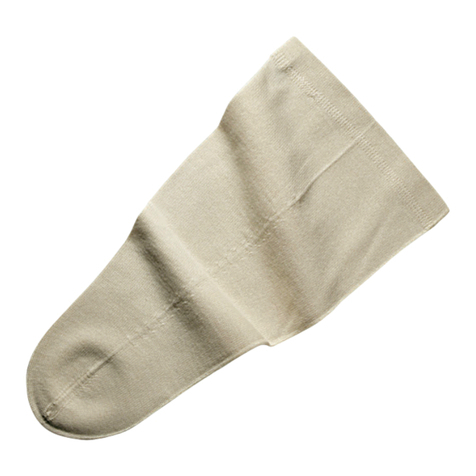
Teufel
Teufel Stump Socks user manual
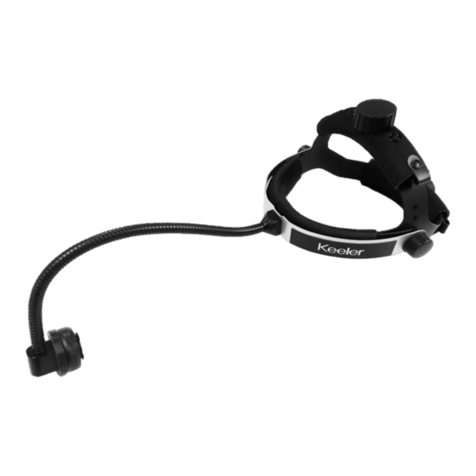
Keeler
Keeler MIO Instructions for use
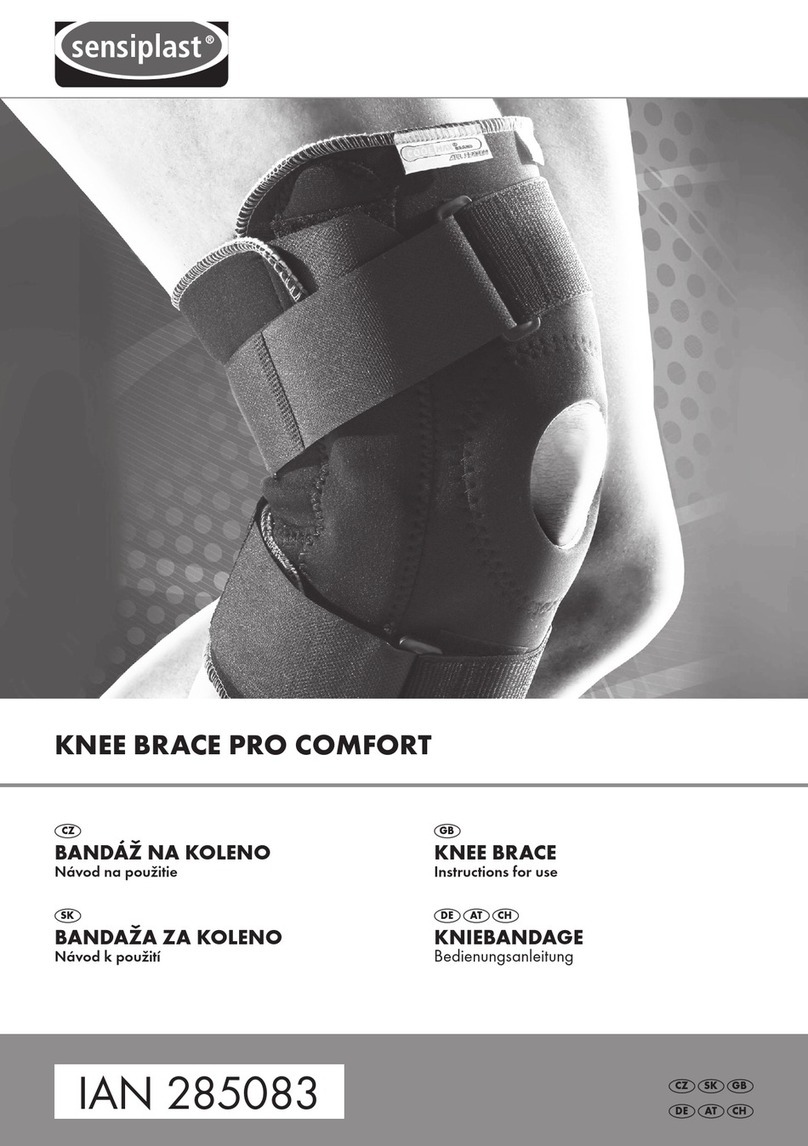
sensiplast
sensiplast PRO COMFORT Instructions for use

AccuBioTech
AccuBioTech SUREPETTE SPA-10 user guide
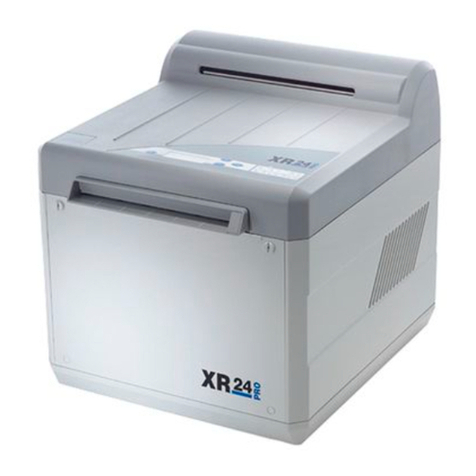
Durr Dental
Durr Dental XR 24 Pro Installation and operating instructions

Drive Medical
Drive Medical 13246 user manual

Homeglow
Homeglow B-Warm instructions
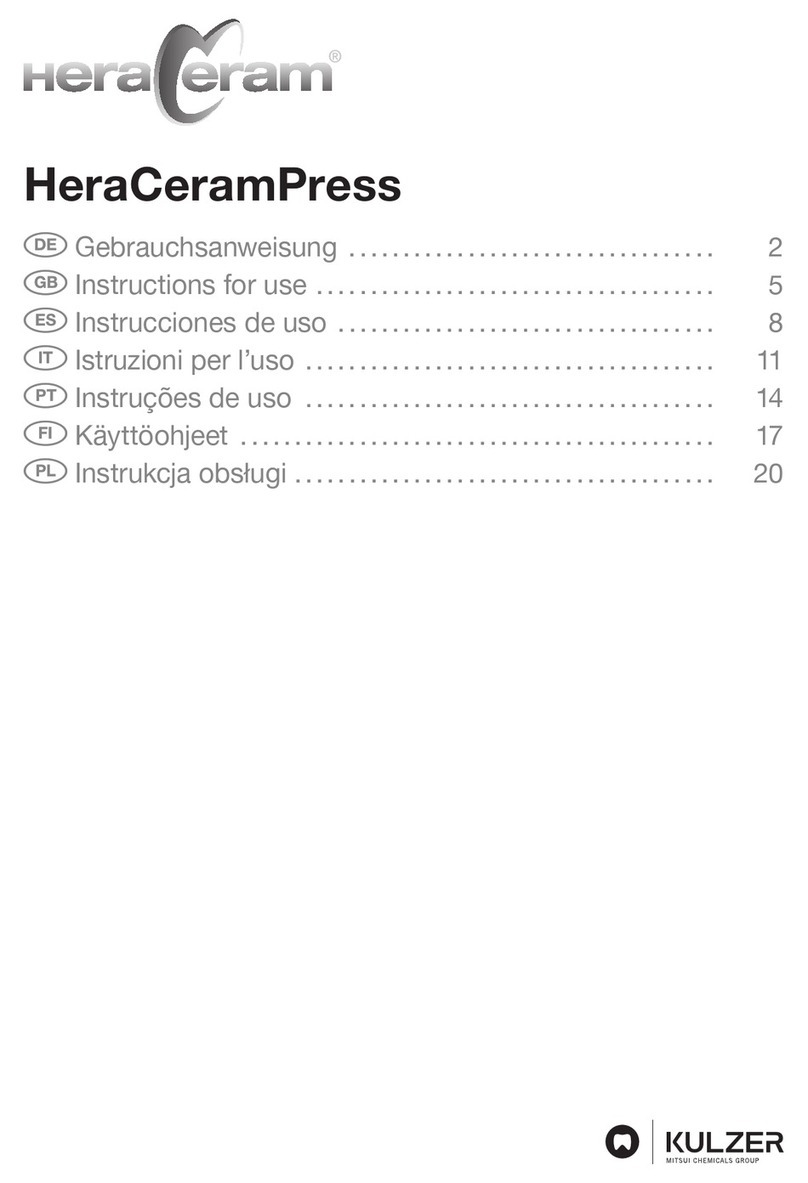
Kulzer
Kulzer HeraCeramPress Instructions for use

Dürr Medical
Dürr Medical iM3 CR 7 VET Installation and operating instructions
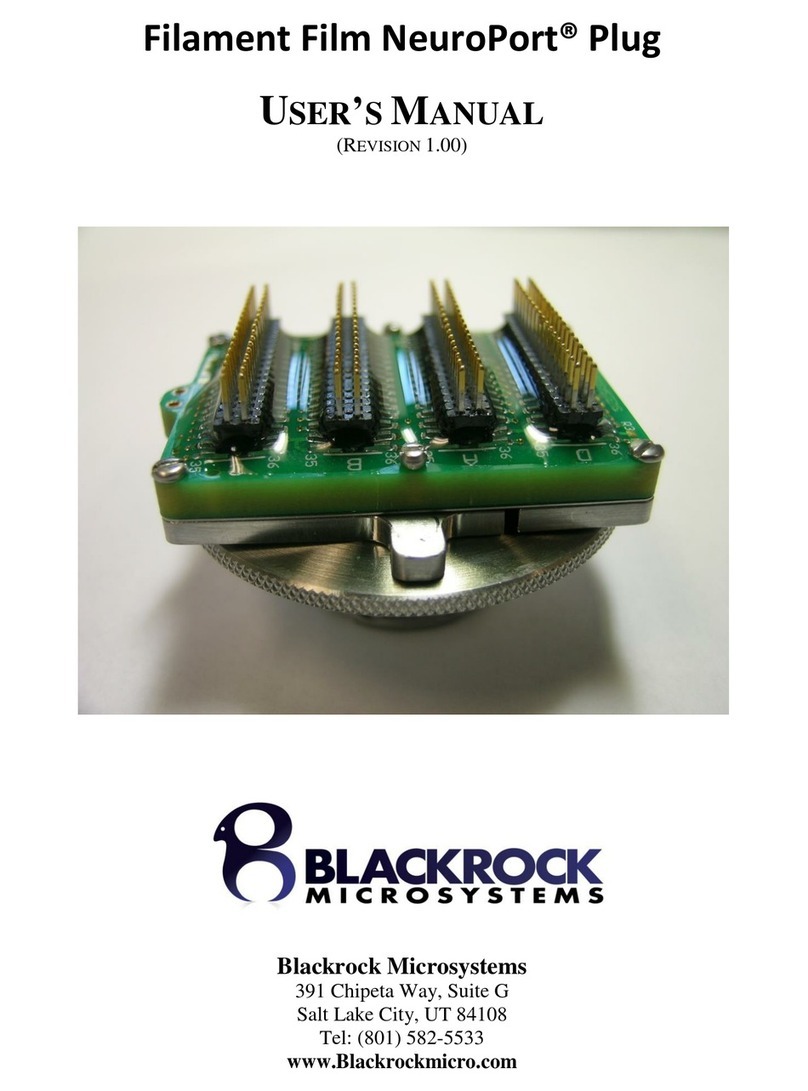
Blackrock Microsystems
Blackrock Microsystems NeuroPort 6221 user manual
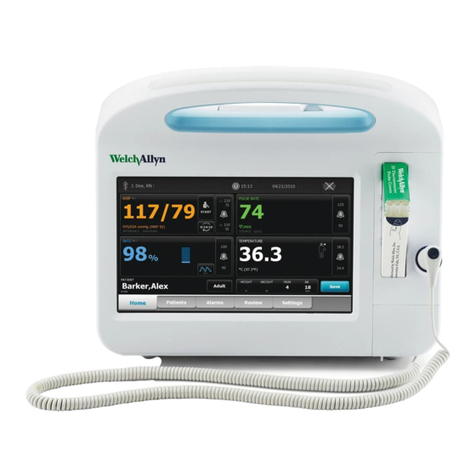
Welch Allyn
Welch Allyn Connex Vital Signs Monitor manual

